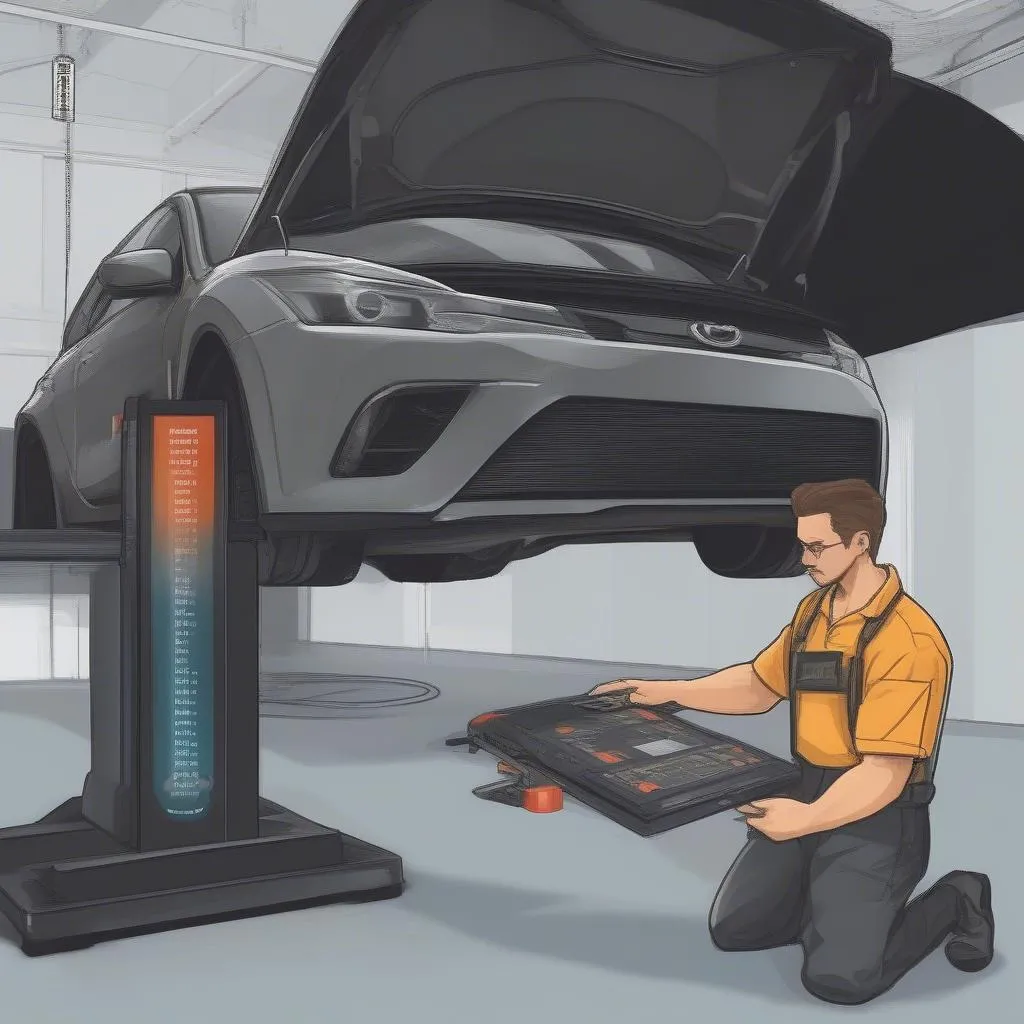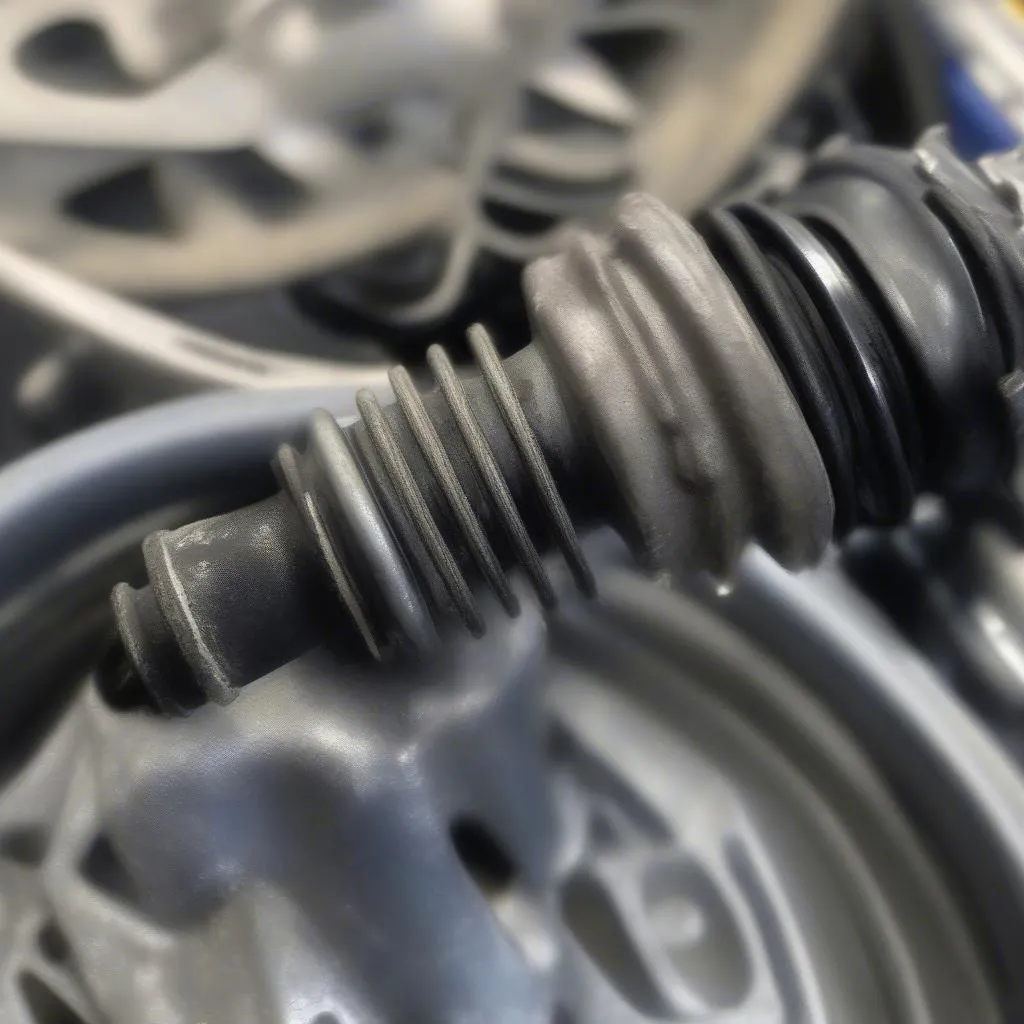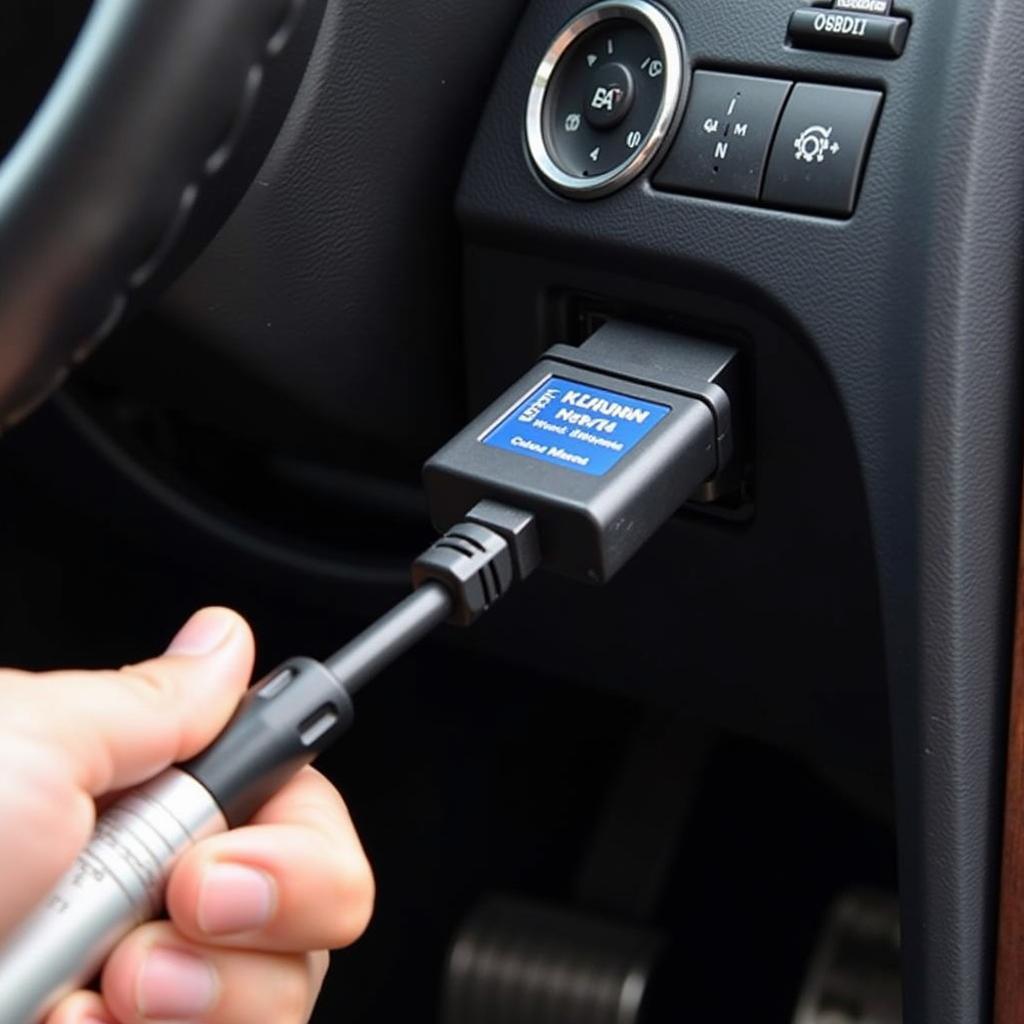Determining the correct ride height on your 2008 Mercedes-Benz GL320 CDI is crucial for optimal performance, handling, and tire wear. This measurement isn’t as simple as eyeballing it – it requires precision. Let’s delve into why this measurement is important and explore the tools and techniques involved.
Why is Ride Height Measurement Important?
Ride height directly impacts several crucial aspects of your GL320 CDI’s performance:
- Handling and Stability: Proper ride height ensures the vehicle weight is distributed correctly, impacting steering response and overall stability, especially at higher speeds.
- Tire Wear: Incorrect ride height can cause uneven tire wear, leading to premature replacement and potentially impacting safety.
- Air Suspension Performance: The GL320 CDI often comes equipped with air suspension. Accurate ride height measurement is vital for diagnosing and addressing potential air suspension issues.
 Mercedes GL320 CDI Air Suspension
Mercedes GL320 CDI Air Suspension
Tools for Measuring 2008 GL320 CDI Ride Height
While dedicated ride height measurement tools specific to the 2008 GL320 CDI might not be as common, you have a few reliable options:
-
Floor to Fender Measurement: This method, while less precise, involves measuring the distance between the ground and a specific point on the fender well. Ensure you use a consistent reference point on the fender and compare your measurements to factory specifications.
“When using the floor-to-fender method, consistency is key. Always measure from the same point on the fender and use a reliable tape measure,” advises Mark Stevenson, an automotive engineer with over 15 years of experience in suspension systems.
-
Professional Wheel Alignment Systems: Many modern wheel alignment systems used by dealerships and specialized shops include ride height measurement capabilities. These systems provide highly accurate readings and can detect even minor discrepancies.
-
Leveling Tools: While not specifically designed for ride height measurement, high-quality leveling tools (digital or traditional bubble levels) can be used in conjunction with other measuring tools to determine ride height with reasonable accuracy.
 Measuring Car Ride Height
Measuring Car Ride Height
Addressing Ride Height Issues
If your measurements reveal a discrepancy in your GL320 CDI’s ride height, it’s essential to identify the underlying cause. Here are some common culprits:
- Worn Suspension Components: Over time, components like struts, shocks, and springs wear down, impacting ride height.
- Air Suspension Malfunctions: Leaks in the air suspension system can cause uneven ride height or a sagging appearance.
- Incorrectly Adjusted Suspension: If your GL320 CDI’s suspension has been adjusted recently, an incorrect setting could be the issue.
 Worn Out Car Suspension
Worn Out Car Suspension
FAQs
Q: Can I adjust the ride height myself?
A: While the 2008 GL320 CDI might have some level of ride height adjustability, it’s recommended to consult a qualified mechanic, especially if you’re dealing with air suspension. Incorrect adjustments can significantly impact your vehicle’s handling and safety.
Q: How often should I check my ride height?
A: It’s a good practice to have your ride height checked annually or whenever you notice any changes in your vehicle’s handling or unusual tire wear.
Cardiagtech for Diagnostic Support
While measuring ride height requires physical tools, diagnosing the root cause of suspension issues often necessitates advanced automotive scanners. Consider exploring CARDIAGTECH’s range of professional-grade diagnostic tools, offering comprehensive system scanning and troubleshooting capabilities. These tools can be invaluable for identifying problems with your GL320 CDI’s air suspension system or other electronic components that might impact ride height.


